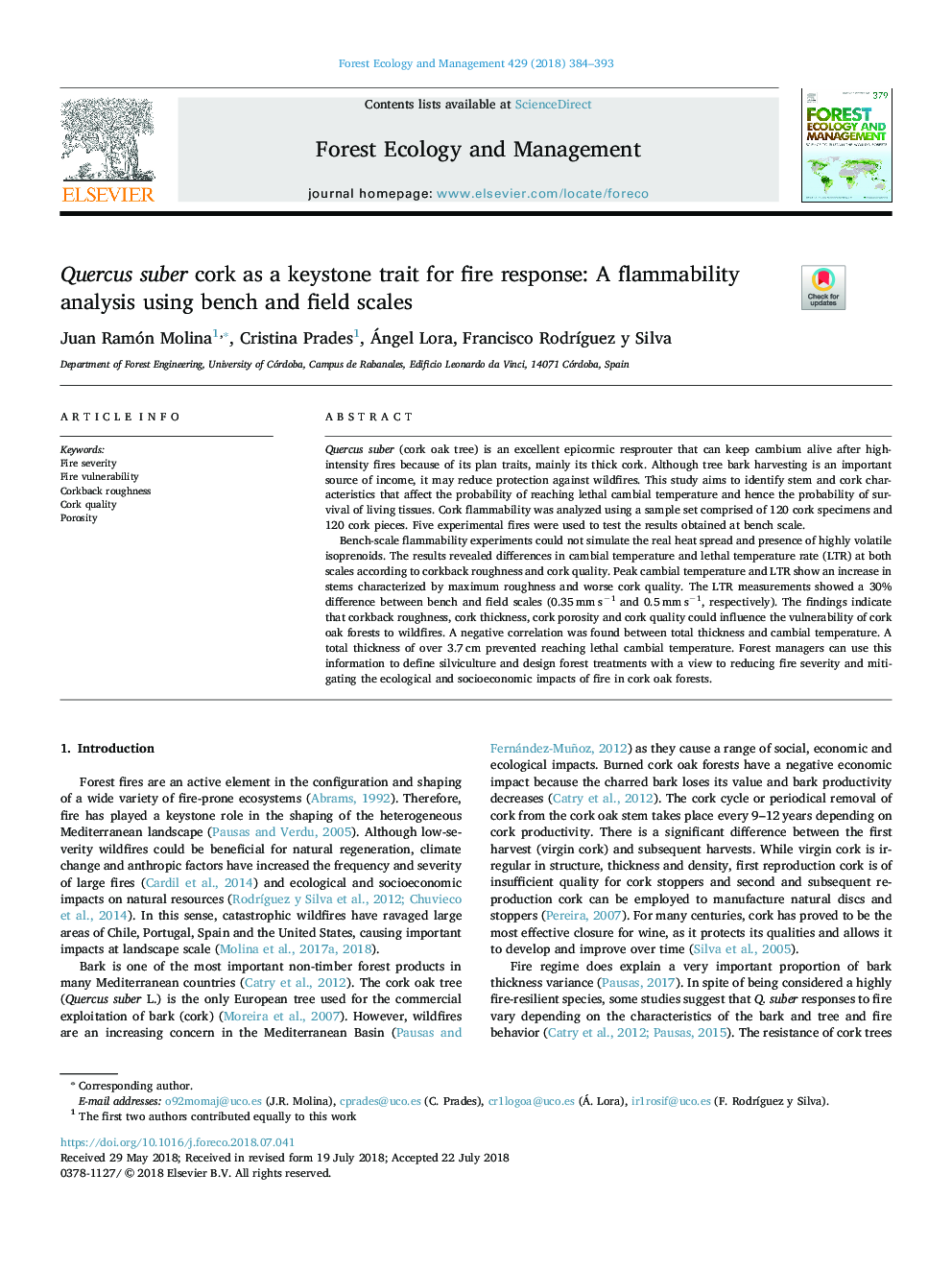| Article ID | Journal | Published Year | Pages | File Type |
|---|---|---|---|---|
| 6541451 | Forest Ecology and Management | 2018 | 10 Pages |
Abstract
Bench-scale flammability experiments could not simulate the real heat spread and presence of highly volatile isoprenoids. The results revealed differences in cambial temperature and lethal temperature rate (LTR) at both scales according to corkback roughness and cork quality. Peak cambial temperature and LTR show an increase in stems characterized by maximum roughness and worse cork quality. The LTR measurements showed a 30% difference between bench and field scales (0.35â¯mmâ¯sâ1 and 0.5â¯mmâ¯sâ1, respectively). The findings indicate that corkback roughness, cork thickness, cork porosity and cork quality could influence the vulnerability of cork oak forests to wildfires. A negative correlation was found between total thickness and cambial temperature. A total thickness of over 3.7â¯cm prevented reaching lethal cambial temperature. Forest managers can use this information to define silviculture and design forest treatments with a view to reducing fire severity and mitigating the ecological and socioeconomic impacts of fire in cork oak forests.
Keywords
Related Topics
Life Sciences
Agricultural and Biological Sciences
Ecology, Evolution, Behavior and Systematics
Authors
Juan Ramón Molina, Cristina Prades, Ángel Lora, Francisco RodrÃguez y Silva,
